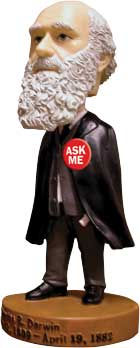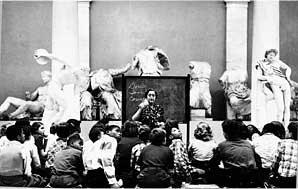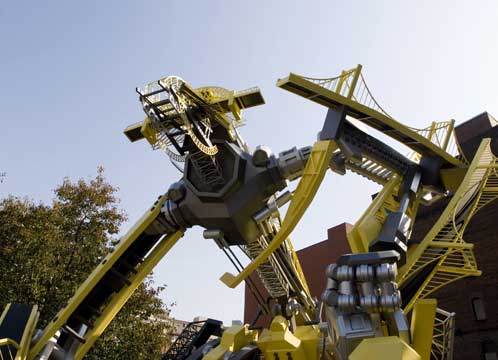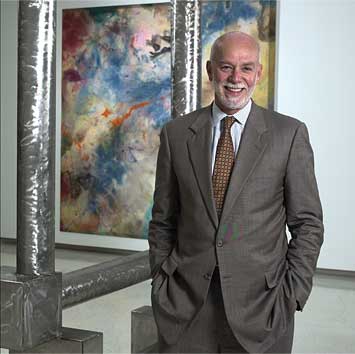|
|
Celebrating the art of photography

Does a picture really speak a thousand words? Yes, and then some, according to Carnegie Museum of Art, as the museum recently announced it was creating a new curatorial department of photography.
The museum nabbed a respected star in the photography art world, regionally and nationally, when it hired Linda Benedict-Jones to head the new department. Benedict-Jones, who starts her new position on December 15, has been executive director of the Silver Eye Center for Photography on the South Side since 1999, where she organized no fewer than 20 exhibitions by regional and national fine art photographers. She’s also served in curatorial roles at Frick Art & Historical Center, the first Pittsburgh International Film Festival, and the Polaroid Collection in Cambridge, Massachusetts. A well-known lecturer on the topic of photography, Benedict-Jones was also an adjunct professor of photography at a number of universities, including Carnegie Mellon and the Harvard Extension School. The collection she’ll be overseeing includes more than 4,500 photographs, and her first exhibition at the museum will open in the summer of 2009.
Calling it “an historic moment for Carnegie Museum of Art,” museum board chair William Hunt noted that the creation of the new curatorial department affirms the museum’s commitment to photo-graphy as art.
 Out of the mouth of...Darwin Out of the mouth of...Darwin
If you could ask Charles Darwin—the man who set the evolution revolution into motion—one question, what would it be? Put to the test, 1,000 curious Pittsburghers of all ages came up with a variety of burning questions, such as: what was his favorite food; what was his “eureka moment”; how did he reconcile his theory of evolution by natural selection with his religious beliefs? Come February, we’ll get the answers—straight from the scientist’s mouth.
As part of a city-wide celebration of Darwin’s 200th birthday, Carnegie Science Center will unveil a new permanent exhibit—a virtual Darwin designed to school visitors on the English naturalist’s life and world-changing science. The idea is to invite the public to hear directly from the source to better understand his ideas about evolution.
Powered by technology invented by the Entertainment Technology Center at Carnegie Mellon University (and funded by a Science Education Partnership award from the National Center for Research Resources, a component of the National Institute of Health), the display will project an image of an actor dressed to look and sound like Darwin and draw answers based on Darwin’s own words. Visitors can choose from 200 pre-determined questions culled from conversations with Pittsburghers with input from scientists. Some questions—such as those about genetics—will be answered by modern scientists, including those from the Museum of Natural History, since Darwin could not have known the answers during his lifetime.
The project is part of a year-long science literacy campaign driven by John Pollock and David Lampe, biology professors at Duquesne University, who are spearheading Darwinian activities in schools and cultural organizations all across town. “This is a golden opportunity to take advantage of a high-profile scientific anniversary to let it all hang out,” says Pollock. “To get the
message out that this is solid science that you can understand and that impacts our lives every single day.”
A virtual field trip 
An annual outing to Carnegie Museums in Oakland by way of a big yellow school bus is a much-anticipated event for thousands of regional school children. But flocks more—youngsters from as far away as New York and Texas—also make the journey by way of real-time, full-motion audio and video.
Through two-way videoconferencing, museum scientists and educators dish the dirt on everything from dinosaurs to Arctic life to groundhogs and bird nests, sharing their know-how through virtual field trips. The hour-long sessions are far from static lectures. Children and teachers get close-ups of many of the Museum of Natural History's treasures—from one-of-a-kind dinosaur bones to Egyptian artifacts—and then participate in lively discussions and get the prized opportunity to "ask the scientist." And now, as part of the new Center for Museum Education in Oakland, the Distance Learning Program—for the first time since its start in 2002—has its own dedicated space within the museum. Once housed in a section of Earth Theater, the new studio, which opened late this fall, sports improvements that pack a big impact: better lighting, improved telephone connections to classrooms near and far, and much-needed additional and permanent space—perfect for concocting brand-new learning experiences.
Calling all alumni of Saturday Art Classes!
Andy Warhol is one. So is Philip Pearlstein. Raymond Saunders, too. And don’t forget Duane Michals. These accomplished artists have more in common than their international standing in the art world: In their youth, they all participated in Saturday Art Classes at Carnegie Museum of Art, now called Art Connections (and formerly called Tom O’Shanters or Palettes).
 In celebration of its 80 years of nurturing budding artists, the museum is inviting former Saturday Art Class students to contribute written accounts of their experiences and how those experiences shaped their lives—and, in some cases, their own artistic careers. Past students are encouraged to share their recollections, including stories about the program’s legendary art instructor, Joseph Fitzpatrick, via email to TAC@carnegiemuseums.org, or by calling 412.246.4896. The museum will share some of these stories during its next annual exhibition of work by current Art Connections students, scheduled for April 4-19, 2009. In celebration of its 80 years of nurturing budding artists, the museum is inviting former Saturday Art Class students to contribute written accounts of their experiences and how those experiences shaped their lives—and, in some cases, their own artistic careers. Past students are encouraged to share their recollections, including stories about the program’s legendary art instructor, Joseph Fitzpatrick, via email to TAC@carnegiemuseums.org, or by calling 412.246.4896. The museum will share some of these stories during its next annual exhibition of work by current Art Connections students, scheduled for April 4-19, 2009.
Transformers on the North Shore

It might look a little like kid’s stuff, but the 20-foot-tall steel and fiberglass sculpture honoring Pittsburgh’s reputation as “The City of Bridges” is very much the stuff of grown-up dreams. Commissioned by Warhol Museum Director Tom Sokolowski and created by Los Angeles artist Glenn Kaino, “ARCH the Transformer” is based on the popular Japanese cartoon series and action toys that change from ordinary objects, such as cars, to complex robots.
As a metaphor, ARCH symbolizes how the city has transformed itself from an industrial giant to a leader in the high-tech field. Built of pieces representing many of the city’s best-known bridges, the sculpture stands as a reminder that Pittsburgh’s past, present, and future are connected—from the city’s days as a steelmaking giant to its leadership role in the field of robotics by way of its world-class universities and technology-based companies.
Part of an art initiative funded by the Heinz Endowments in honor of the city’s 250th birthday, this transforming work of public art will be on display at the corner of Fort Duquesne Boulevard and Seventh Street through May 2009.
Richard Armstrong takes Manhattan, and the art world

During his 16 years at the Museum of Art—the last 12 as director—Richard Armstrong compiled a long list of accomplishments that burnished the institution’s already strong reputation. Now, as he prepares to take on his new role as director of the Solomon R. Guggenheim Foundation and Manhattan’s Guggenheim Museum, it’s only fitting that Art Review magazine name Armstrong to its “Power 100” list of the most influential people in the art world.
After joining the museum in 1992 as curator of contemporary art, Armstrong played a strong role in helping to enhance the stature of the institution. During his tenure, he supervised the renovation of the Heinz Galleries and the Heinz Architectural Center. He led the museum through a period of prolific creativity, as its curatorial staff staged internationally acclaimed exhibitions such as Aluminum by Design; Light! The Industrial Age, 1750-1900; and Fierce Friends, Artists and Animals. Armstrong also oversaw the renovation of the Scaife Galleries, which house the museum’s permanent collections.
“My 16 years in Pittsburgh have been endlessly satisfying,” says Armstrong. “Carnegie Museum of Art is a great treasure, and in the hands of an exceptional staff, board, and volunteer groups. Its future is bright, and I leave with real gratitude.”
Among his other notable achievements was the pivotal role he played in the staging of four Carnegie Internationals, including the current Life on Mars.
“Richard’s tenure at Carnegie Museum of Art will be known as the years of increased financial stability, strong growth with the education programs, renowned exhibitions, erudite art acquisitions, and the recruitment and oversight of a preeminent curatorial staff,” says William Hunt, the museum’s board chair. “Richard elevated the stature of Carnegie Museum of Art, not only in Pittsburgh, but within the art world.” |
 Winter 2008
Winter 2008


 Out of the mouth of...Darwin
Out of the mouth of...Darwin 
 In celebration of its 80 years of nurturing budding artists, the museum is inviting former Saturday Art Class students to contribute written accounts of their experiences and how those experiences shaped their lives—and, in some cases, their own artistic careers. Past students are encouraged to share their recollections, including stories about the program’s legendary art instructor, Joseph Fitzpatrick, via email to TAC@carnegiemuseums.org, or by calling 412.246.4896. The museum will share some of these stories during its next annual exhibition of work by current Art Connections students, scheduled for April 4-19, 2009.
In celebration of its 80 years of nurturing budding artists, the museum is inviting former Saturday Art Class students to contribute written accounts of their experiences and how those experiences shaped their lives—and, in some cases, their own artistic careers. Past students are encouraged to share their recollections, including stories about the program’s legendary art instructor, Joseph Fitzpatrick, via email to TAC@carnegiemuseums.org, or by calling 412.246.4896. The museum will share some of these stories during its next annual exhibition of work by current Art Connections students, scheduled for April 4-19, 2009.
